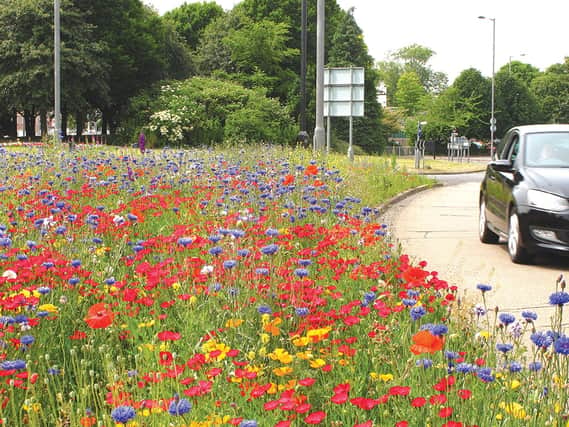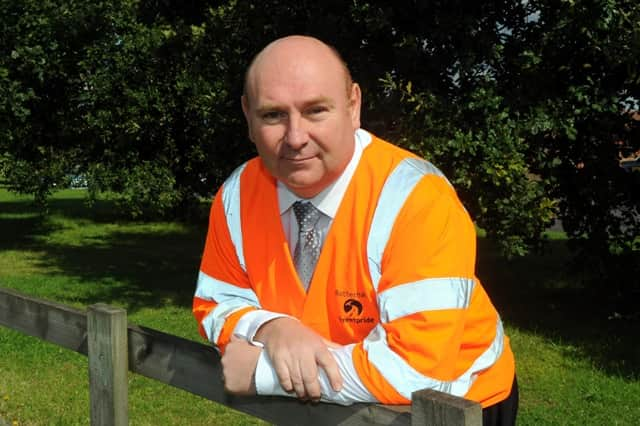FEATURE: The story behind Rotherham's bloomin' lovely River of Colour


WHAT started off as a small borough council gardening project with a few shop bought seeds has flowered into a project that has been replicated on a national and international stage.
Advertiser reporter Adele Forrest spoke to the man behind Rotherham’s River of Colour project to find out more about the scheme. (From the archives; this story was first published in August 2014).
Advertisement
Advertisement
A SEA of colourful wildflowers is the blooming crop of a pioneering Rotherham initiative which is brightening up the borough’s roadsides.
Managed by the Streetpride team, the River of Colour project has seen eight miles of grass central reservations transformed into a sea of colourful wildflowers.
No other council had ever attempted the project over such a distance before, and the man behind the idea was Streetpride manager Richard Jackson (pictured below).


Richard’s inspiration for the River of Colour came from an earlier council project he had worked on, where wildflowers sown in Warren Vale received “rave reviews”.
Advertisement
Advertisement
Richard said this mix was done by opening seed packets, sprinkling them into a soil-filled bin and hand scattering them.
In 2010, when Richard came to look at how the team could save the grounds maintenance service more money, introducing wildflowers seemed like a perfect solution.
At this time the council was spending around £80,000 on cutting the eight miles of grass, seven times a year, with outside contractors providing traffic management when the roads were closed to allow the work to take place. Richard believed bringing it back inhouse and planting the wildflowers would bring back some colour and interest to the A631 Bawtry Road and A630 Centenary Way reservations. He also felt having the wild flowers would reduce the amount of times the council would have to cut the reservations as it would be less dense than grass and so visibility for motorists would be better.
Richard admitted it was a gamble but Streetpride teamed up with Sheffield-based Green Estates — who delivered much of the impressive planting at London’s Olympic Village in 2012 and have the contract to do the Rugby World Cup next year — to make his idea a reality.
Advertisement
Advertisement
Green Estates seed mixtures are cleverly engineered so that different flowers and colours come through at different times of the year.
Richard said: “The idea is that we get the first flush of colour in March, which are the reds and purples with the poppies and red orach.
“When those flowers die down the next flowers to appear are the blues, like the cornflowers, which then grow taller and hide the dying remains of the earlier species. Yellows and oranges like the Californian poppies and corn marigolds appear as we get into November.”
The gamble paid off and Streetpride has now had more than 250 compliments via phone, emails and letters from residents, visitors and even singer Toyah Willcox.
Advertisement
Advertisement
“We could have just cut the grass and moved on, but we got the opportunity to do something that sticks out,” said Richard. “I think it looks absolutely fabulous and those 250 people would never have contacted the council previously, and we’ve now saved £20,000 for the grounds maintenance budget.”
Three Scottish councils, plus councils in Hartlepool and Coventry have contacted Richard about the project and will be replicating it in their area. An Australian man, Maurice Kennedy from Bowral in New South Wales, even heard about the River of Colour and contacted Richard.
“He got in touch asking questions about how and why we did it,” Richard said. “I sent him all the information and he took it and presented it to his own council.”
Parkgate Shopping bosses were so impressed with the wildflowers near its site that they paid the council to seed it again, and Tesco has also paid for more to be sown near where its building contractors have disrupted the crop during the new town centre Tesco Extra development.
Advertisement
Advertisement
When the wildflower has been cut, some residents have complained that the council has massacred the crop, but Richard said the team only cut it when weedkiller was put down, or when vegetation needed to be cut back due to visibility problems at junctions.
The last cut was in July and it is hoped there will be a flush of yellows and oranges in November.
“Hopefully in late March 2015 we will weed kill all of the eight miles and reseed it again in April,” said Richard.
The team is now deciding what seed mixture to use next year — so watch this space.